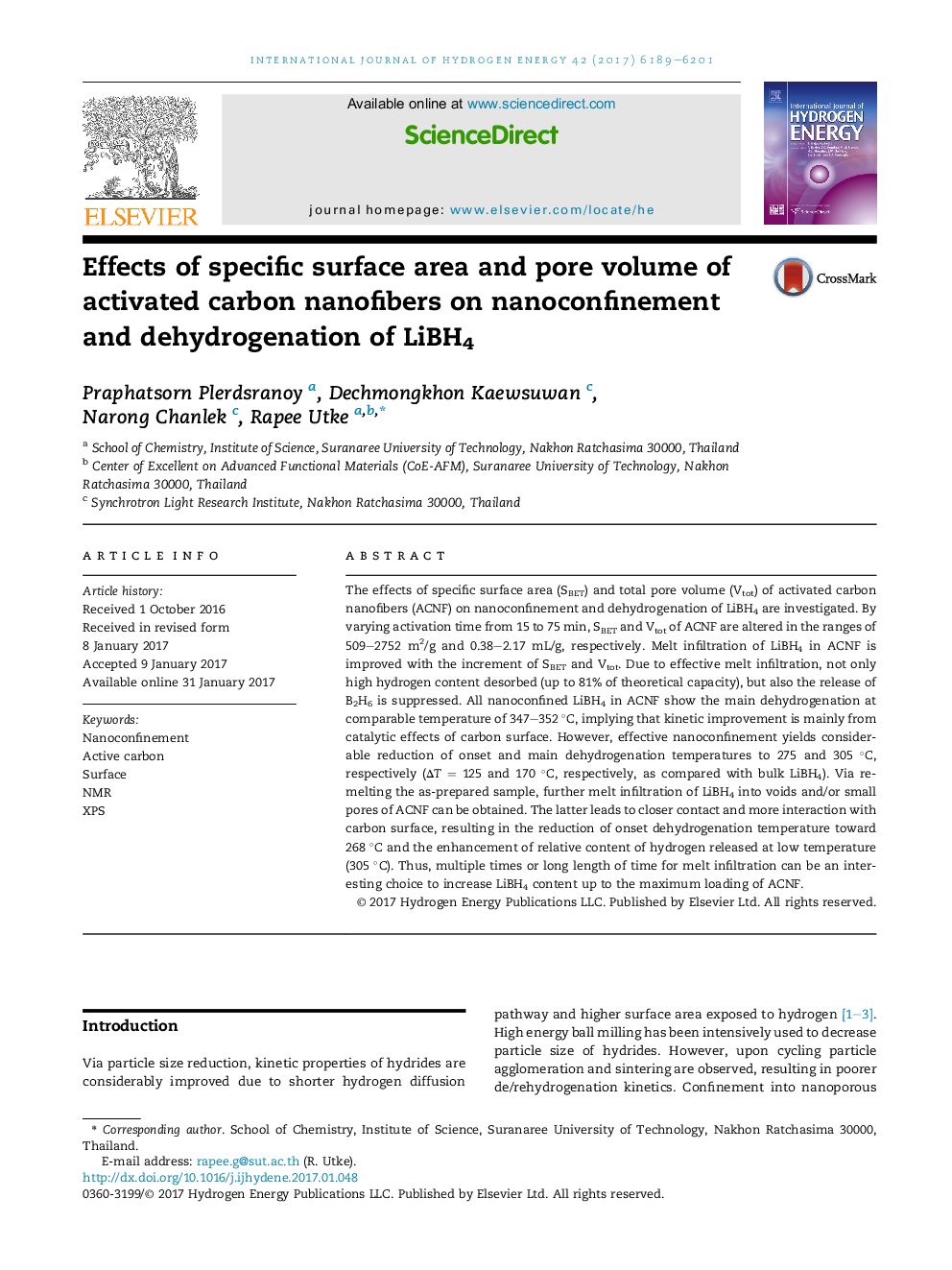| Article ID | Journal | Published Year | Pages | File Type |
|---|---|---|---|---|
| 5146826 | International Journal of Hydrogen Energy | 2017 | 13 Pages |
Abstract
The effects of specific surface area (SBET) and total pore volume (Vtot) of activated carbon nanofibers (ACNF) on nanoconfinement and dehydrogenation of LiBH4 are investigated. By varying activation time from 15 to 75 min, SBET and Vtot of ACNF are altered in the ranges of 509-2752 m2/g and 0.38-2.17 mL/g, respectively. Melt infiltration of LiBH4 in ACNF is improved with the increment of SBET and Vtot. Due to effective melt infiltration, not only high hydrogen content desorbed (up to 81% of theoretical capacity), but also the release of B2H6 is suppressed. All nanoconfined LiBH4 in ACNF show the main dehydrogenation at comparable temperature of 347-352 °C, implying that kinetic improvement is mainly from catalytic effects of carbon surface. However, effective nanoconfinement yields considerable reduction of onset and main dehydrogenation temperatures to 275 and 305 °C, respectively (ÎT = 125 and 170 °C, respectively, as compared with bulk LiBH4). Via re-melting the as-prepared sample, further melt infiltration of LiBH4 into voids and/or small pores of ACNF can be obtained. The latter leads to closer contact and more interaction with carbon surface, resulting in the reduction of onset dehydrogenation temperature toward 268 °C and the enhancement of relative content of hydrogen released at low temperature (305 °C). Thus, multiple times or long length of time for melt infiltration can be an interesting choice to increase LiBH4 content up to the maximum loading of ACNF.
Related Topics
Physical Sciences and Engineering
Chemistry
Electrochemistry
Authors
Praphatsorn Plerdsranoy, Dechmongkhon Kaewsuwan, Narong Chanlek, Rapee Utke,
